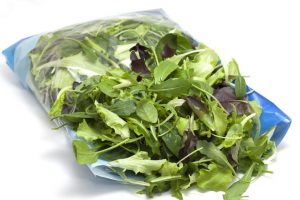Don and I recorded a podcast today and one of the potential show titles was math is hard.
I’m writing from experience, I had to take calculus in high school twice to get it. Explaining probability and risk is even tougher.
Some of the math of food safety illness burden comes down to this for me: There are billions of meals every year in the U.S. that don’t lead to foodborne illness.
That’s good.
There are millions of meals every year in the U.S. that do lead to foodborne illness.
That’s bad.
There was some buzz in the food and health media after a CNN article stated that CDC had investigated more multistate outbreaks in 2018, 21 in total, than any previous year.
That’s sorta true, but sorta not, depends on how it’s counted.
Rachel Rettner of Live Science talked to me about this last week and I shared the National Outbreak Reporting System (NORS) dashboard with her. This is a super cool tool that CDC has where they track all the reported outbreaks in the U.S. and the number isn’t 21. It’s probably closer to 4000. At least that’s around what has been reported into NORS annually since 2009 when reporting got better.
I’m throwing out the multistate part in my calculations, because the microbes don’t care about state lines or borders.
From the Live Science article:
Experts say that, although we heard a lot about foodborne disease in 2018, it doesn’t mean that we had any more outbreaks than usual. Indeed, it’s likely that the U.S. always has about the same number of outbreaks every year, said Benjamin Chapman, an associate professor and food safety specialist at North Carolina State University. But critically, health officials are getting better at detecting these outbreaks, Chapman said, leading to an increase in reported outbreaks in recent years.
“The science is getting better, and the public health resources are getting better, and we’re just getting better at finding things,” Chapman told Live Science
And although these outbreaks made headlines, there are hundreds more outbreaks that we don’t necessarily hear about that get investigated and reported every year. (An outbreak refers to an instance when two or more people get the same illness from the same contaminated food or ingredient, according to the CDC.)
Indeed, according to the CDC’s National Outbreak Reporting System, which summarizes data on U.S. reports of foodborne illness, there were about 4,000 foodborne illness outbreaks each year from 2012 to 2016, (the most recent years for which data is available). That’s up from only about 1,000 reported outbreaks in 2008.
That “looks like this big jump” in outbreaks, Chapman said. But the increase is really due to health officials getting better at “connecting the dots” to find more foodborne illness outbreaks, he said. In other words, the outbreaks were happening, but health officials just weren’t as good as detecting them.
Unfortunately, better detection of outbreaks means that the total number of reported outbreaks likely won’t be going down anytime soon.
“As we get better at reducing risk [of foodborne illness], we also get better at finding things we didn’t know were there,” Chapman said. “I don’t expect that we would have any less or any more outbreaks in 2019.”









